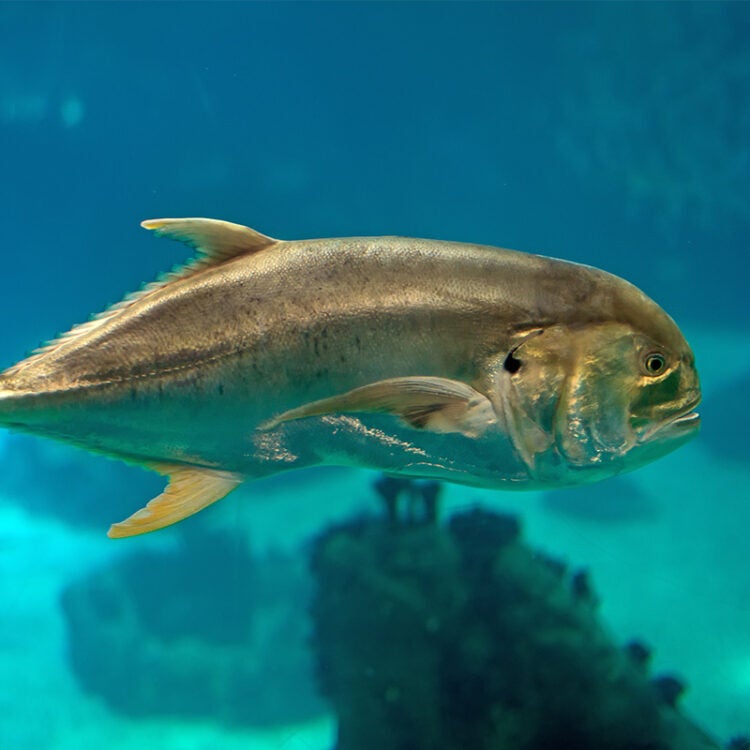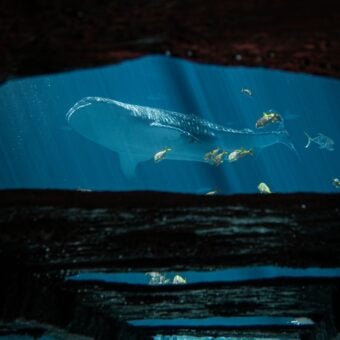-
Size
4 feet (1.2 m) -
Diet
Smaller fish, shrimp and other invertebrates -
Range
Atlantic ocean -
Habitat
Schools in open waters over outer reefs and over the continental shelf
Physical Characteristics
- Maximum length is 4 feet (1.2 m) with a maximum weight of 70 lbs. (32 kg).
- Steep forehead.
- Silver overall with a pale olive to bluish green color dorsally and silver to brassy on the sides. Fins may be yellowish.
- It has a distinguishing black spot on the margin of the gill cover about level with its eye and a larger black spot at the base of the pectoral fin.
Animal Fact
The crevalle jack will often grunt or croak when caught by fishermen.
Diet / Feeding
- Diet consists of smaller fish, shrimp and other invertebrates.
Range / Habitat
- Occurs in the Eastern Atlantic from Portugal to Angola and in the western Mediterranean. Also in the Western Atlantic from Nova Scotia to the northern Gulf of Mexico and Uruguay, including the Greater Antilles.
- Adults are generally found in schools in open waters over outer reefs and over the continental shelf. Ranges to depths of about 1,148 feet (350 m) and will ascend rivers.
- Juveniles are abundant in brackish estuaries with muddy bottoms, near sandy beaches and on seagrass beds.
Conservation Status
- “Least Concern” on the IUCN Red List.
Additional Information
- The crevalle jack will often grunt or croak when it is caught by fishermen.
- Larger individuals sometimes swim alone or can be found in fast-moving schools.
- Important food fish as well as a favorite of sport fishermen because of its strength and fighting spirit.
Sources
- www.fishbase.org
- Coral Reef Fishes. Lieske, E. and Myers, R., pgs. 154,155
- Field Guide to Saltwater Fishes of North America. McClane, A. J., pgs. 225 – 227






